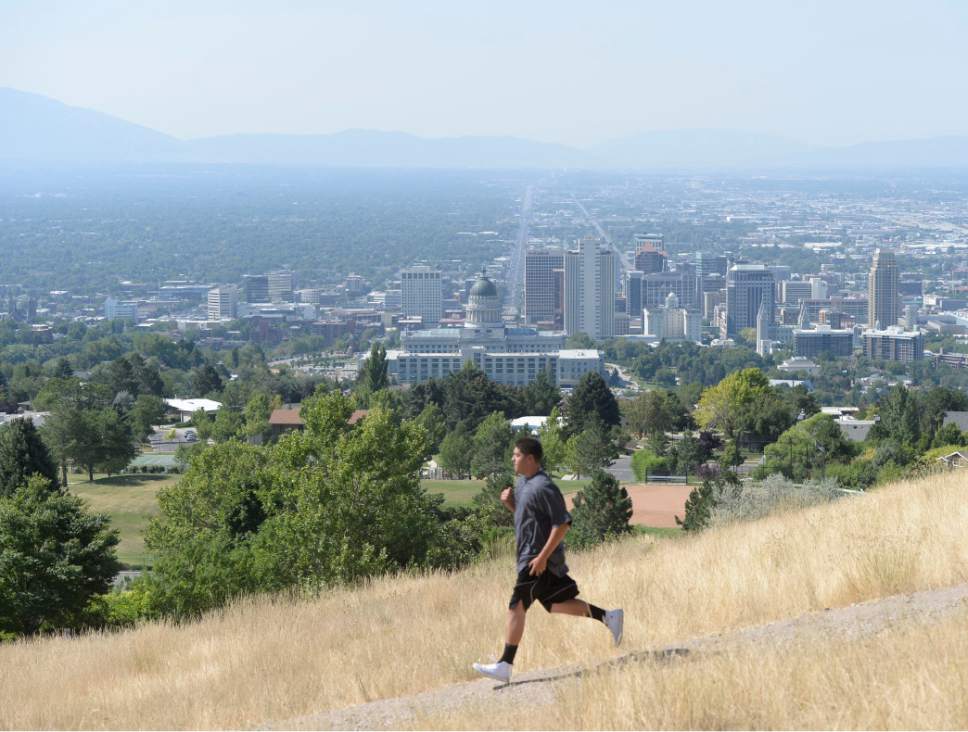This is an archived article that was published on sltrib.com in 2017, and information in the article may be outdated. It is provided only for personal research purposes and may not be reprinted.
The U.S. Environmental Protection Agency has signaled that it may reconsider its 2015 tightening of ozone standards — a rule that a half-dozen Utah counties now violate.
The U.S. Court of Appeals for the District of Columbia on Tuesday granted an EPA request to delay hearings in a case related to the 2015 rule, but ordered the agency to file status reports regarding an internal review every 90 days.
The EPA decided two years ago to decrease the allowable concentration of ozone from 75 parts per billion to 70 parts per billion.
According to the agency, the change was based on 2,300 scientific studies suggesting the average healthy adult would begin to suffer adverse health effects when exposed to ozone concentrations greater than 72 parts per billion.
Ozone is a pollutant that forms in the atmosphere when certain chemicals from car emissions and other sources react with sunlight. Exposure to high concentrations of ozone is known to cause lung damage. The American Thoracic Society estimates that ozone contributes to 38 deaths annually in Utah.
The state filed a report to the EPA in 2016, saying that several of its counties did not comply with the new ozone standard.
But Bryce Bird, director of the Utah Division of Air Quality, said that as of Wednesday morning, the state had not received word that the EPA would reconsider the new standards.
Bird said his staff would continue to assume Utah will have to comply until any changes become official.
"Right now, the rule is in place," he said, "and a statement by an attorney doesn't change what's happening until the rule changes."
EPA officials did not immediately respond to requests for confirmation that the agency is reconsidering the ozone standard.
Because the rule is already final, Bird said, changing it would require a court order overturning the EPA decision. Otherwise, the agency would have to rewrite the rule entirely via a public process that could take years to complete.
Utah officials already have recommended creating three new nonattainment areas for ozone in response to the 2015 standards.
One would cover the western side of Utah County. Another is to include Salt Lake and Davis counties, the western side of Weber County and population centers in Tooele County. The third would encompass areas in Duchesne and Uintah counties with an elevation below 6,000 feet.
The EPA was expected to weigh in on the state's recommendations this October. Should the agency agree with the state's findings, Utah would have three years to monitor ozone trends within these areas to see if existing pollution controls bring the areas into compliance.
If after three years Utah doesn't meet the new standard, the state would be required to submit a plan to the EPA for further reducing ozone pollution.
Control measures could include smog-limiting regulations for industry, businesses and home appliances; episodic bans on open fires; and steps to reduce vehicle emissions.
Twitter: @EmaPen



